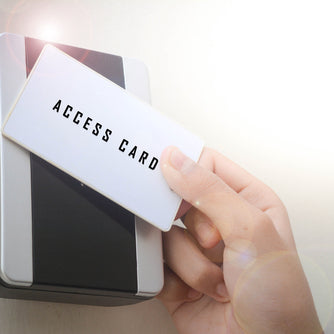No Products in the Cart

In today's digital landscape, security is increasingly important, and businesses are turning to cloud-based access control systems to safeguard their assets. These systems offer a range of benefits however, alongside these advantages come. In this article, we delve into the pros and cons of cloud-based access control systems, examining how they can enhance security and operational efficiency while also considering the potential risks and drawbacks. By understanding the intricacies of these systems, businesses can make informed decisions about whether cloud-based access control aligns with their security needs and organizational objectives. Through a comprehensive exploration of both the benefits and limitations, this article will show the complexities of modern access control solutions in an increasingly interconnected world while also diving into further improvements for your system through business access cards.
As cloud-based access control entails lower upfront costs, such as physical access control hardware and extensive building updates, it seamlessly integrates into any facility. Typically, you can effortlessly download your preferred access control software with minimal setup required. Moreover, if you wish to extend access control beyond your company database and IT department, integration with hardware at your facility is straightforward. For instance, you can implement building access cards tailored to each employee listed in the organization's database. These cards can facilitate entry into the physical building, access to the parking garage, or both.
Furthermore, your cloud-based access control is readily accessible via any phone or laptop, provided your user access permits. This feature proves invaluable for traveling employees who may find themselves miles away from their corporate office yet still able to access essential data within the organization.
By integrating your cloud-based access control system with a physical access system like building access cards, you establish a mechanism for holding employees accountable for their actions within the workplace. For instance, installing a card reader at the building entrance allows you to track employee entry times and identities, with this data seamlessly collected and stored within your access control software.
This integration not only fosters accountability but can also bolster your efforts in employee retention. With the increasing number of younger professionals joining the workforce, having up-to-date software is almost an expectation. Furthermore, building access cards provide an additional layer of security against external threats, instilling a sense of safety and protection among employees.
Moreover, cloud-based access control facilitates the seamless transition between remote and in-office work for hybrid employees. The accessibility of the company database from any location ensures that employees can work from home or switch to in-office work without disruption, contributing to enhanced flexibility and productivity.
One glaring drawback of a cloud-based access control system is its reliance on internet connectivity. Consider a scenario where you're in the midst of a critical company data audit, and suddenly, the internet connection drops. This outage not only deprives you of access to vital data but may also result in substantial setbacks, potentially jeopardizing the progress of your audit.
Furthermore, system crashes are not merely a remote possibility but a likely occurrence. Such crashes can be triggered by various factors, including adverse weather conditions, cyberattacks, or internal errors. It underscores the necessity of implementing additional protective measures for your cloud-based access control system, such as complementing it with building access cards. This multifaceted approach enhances resilience against unforeseen disruptions and reinforces the security of your access control infrastructure.
Another significant concern associated with using a cloud-based access control system is its vulnerability to cybersecurity attacks. Despite taking preventive measures, such attacks are becoming increasingly prevalent in business organizations.
Given the likelihood of a database breach, there's a pressing need to address concerns regarding data privacy. Consider the scenario of a hospital's cloud-based access control being compromised; this could lead to the exposure of hundreds of patient files. The ramifications extend beyond financial details to encompass sensitive information such as insurance records, medical history, social security numbers, and more.
In conclusion, cloud-based access control systems offer numerous advantages, including easy integration, accessibility, accountability and employee retention, making them a popular choice for organizations seeking flexible and cost-effective security solutions. However, these systems also present challenges such as dependency on internet connectivity, susceptibility to cybersecurity attacks, and concerns regarding data privacy. Despite these drawbacks, mitigating measures such as integration with physical access systems in the form of card readers and building access cards and robust cybersecurity protocols can enhance the resilience and security of cloud-based access control deployments.
Ultimately, the decision to adopt a cloud-based access control system should be carefully evaluated, considering the unique needs and risk factors of each organization. By weighing the pros and cons thoughtfully and implementing appropriate safeguards, businesses can leverage the benefits of cloud-based access control while minimizing potential drawbacks, ensuring a secure and efficient access management solution for their operations.